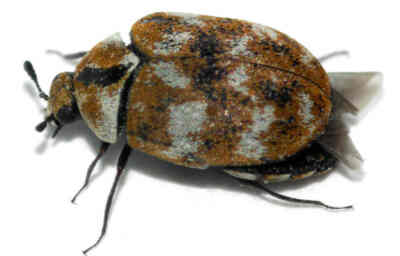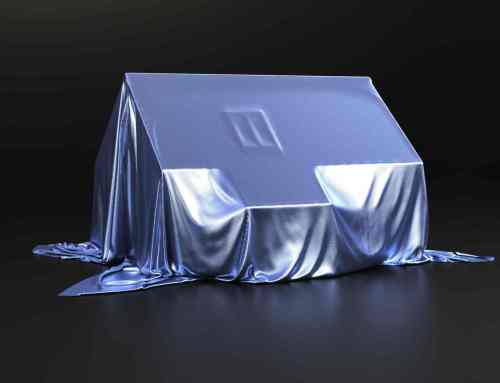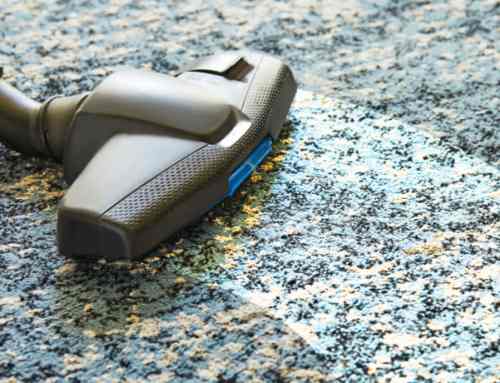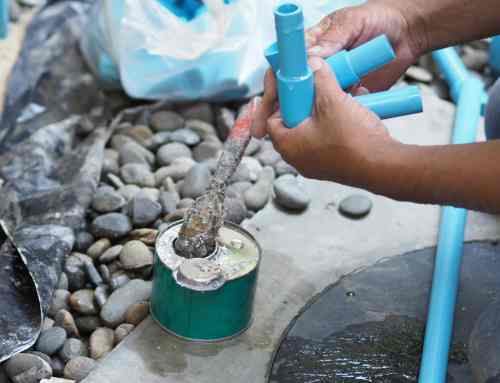Carpet Beetle Facts
Carpet beetles deserve to rank near the top of your list of uninvited guests. These oval-shaped flying insects can ruin your carpets, rugs, upholstered furniture, and clothing as well as cause irritating dermatitis in children and sensitive adults. These are unwelcome guests you really want to “show the door” as quickly as possible. Learn more carpet beetle facts below:
Life Cycle of a Carpet Beetle
 The four life-stages of carpet beetles are egg, larvae, pupae, and adult. Female carpet beetles lay up to a hundred eggs, which hatch into larvae in approximately 35 days. This stage is the most damaging because larvae feed on carpets and clothing. The larval stage lasts 6 to 18 months, during which these voracious insects do the most damage. The final part of the larval stage is metamorphosis, after which the adult beetle emerges. Adult carpet beetles can live up to a year.
The four life-stages of carpet beetles are egg, larvae, pupae, and adult. Female carpet beetles lay up to a hundred eggs, which hatch into larvae in approximately 35 days. This stage is the most damaging because larvae feed on carpets and clothing. The larval stage lasts 6 to 18 months, during which these voracious insects do the most damage. The final part of the larval stage is metamorphosis, after which the adult beetle emerges. Adult carpet beetles can live up to a year.
Identifying Carpet Beetles
The larvae are very small, so it can be difficult to spot them. Larvae look like tiny, hairy worms and prefer dark, undisturbed areas such as under furniture, rugs and in closets. Adult black carpet beetles are black with brown-colored legs, and their length in inches ranges from 1/8 to 3/16. As larvae, these pests shed skin and fecal pellets, each of which can cause allergic reactions in some people. Carpet beetles do not bite people or animals. The irritation caused by contact with carpet beetle larvae can be confused with bites from bed bugs or fleas. Property damage from carpet beetles is very similar to moth damage. Small, irregular-shaped holes in clothes and rugs are a telltale sign of either a carpet beetle or moth problem. If it is a moth problem, you will usually see moths in the area. Adult carpet beetles prefer to live outdoors and graze on pollen.
Fighting back
Maintaining cleanliness may not be enough to avoid an infestation from carpet beetles. Since these pests can enter on food packages, luggage and on shoes, they are difficult to avoid—especially if you have a pet, as larvae feed on animal fur and dander. Along with vacuuming, professional carpet, rug and upholstery cleaning are essential. Detergent and hot water kill the larvae, so this is an important means of limiting carpet beetle populations indoors.
Other recommended measures to reduce the likelihood of a carpet beetle problem are:
- Effective sanitation including routine vacuuming and housekeeping of pantry shelves and pet feeding and sleeping areas helps reduce the breeding sites and food sources;
- Storing items like wool clothing, leather and fur coats in sealed garment bags;
- Checking flowers, patio plants, and any second-hand items carefully before bringing indoors;
- Dry cleaning and using a clothes dryer on high heat to kill carpet beetle larvae in clothing and drapes;
- Ensuring that air ducts are clean and attics and crawl spaces are free of animal nests or carcasses.
Pesticides may be necessary to eliminate an existing infestation. Choose a pesticide designed for carpet beetles and follow label directions. Eliminating a heavy infestation is best left to a professional pest control specialist. If you suspect that you have a carpet beetle problem or want to avoid one, call Clean Pro Cleaning & Restoration so that we can clean your carpet, upholstery and drapery. That is a logical first step to eliminating these destructive invaders.







